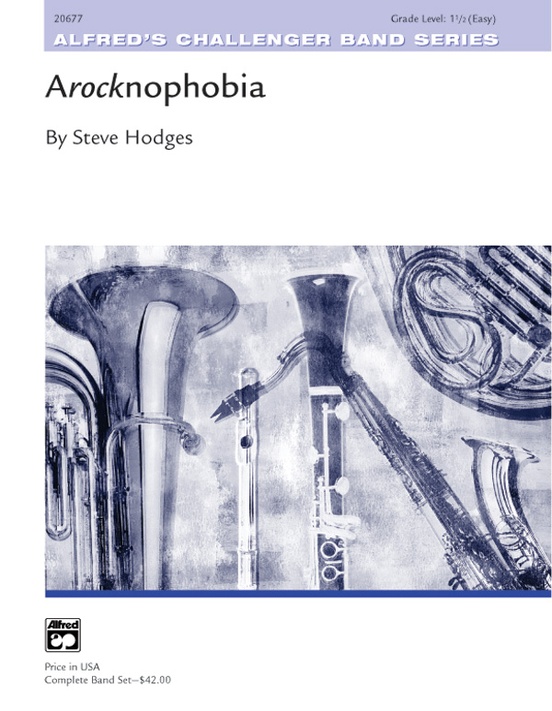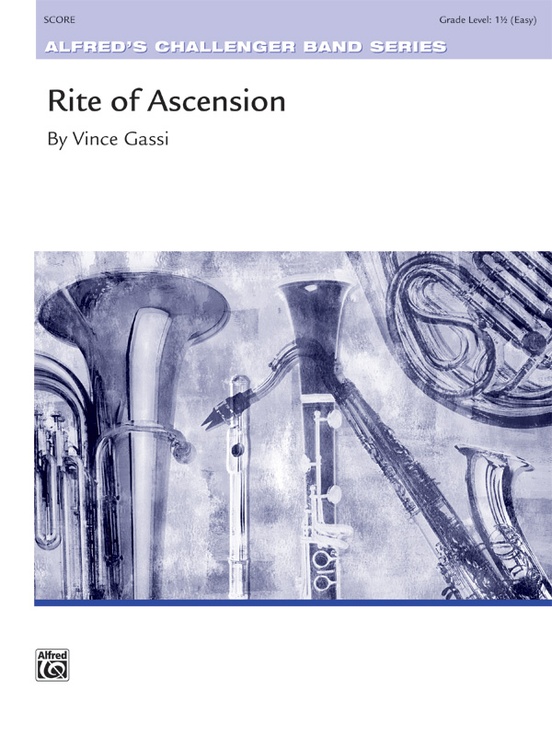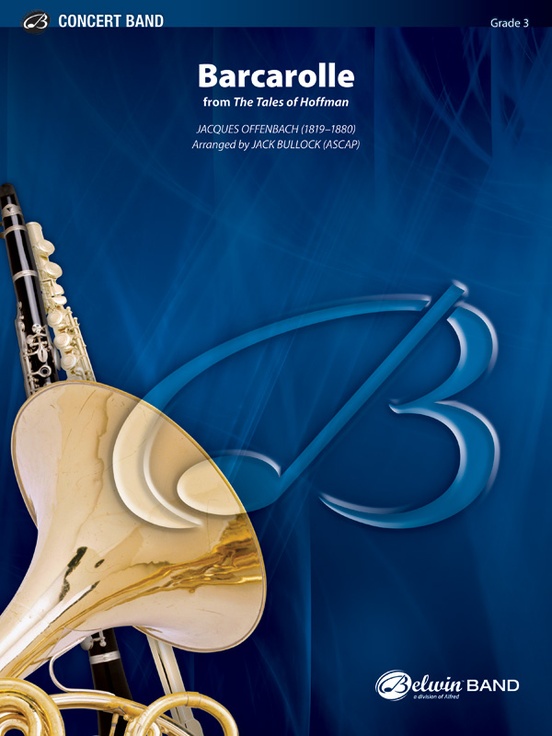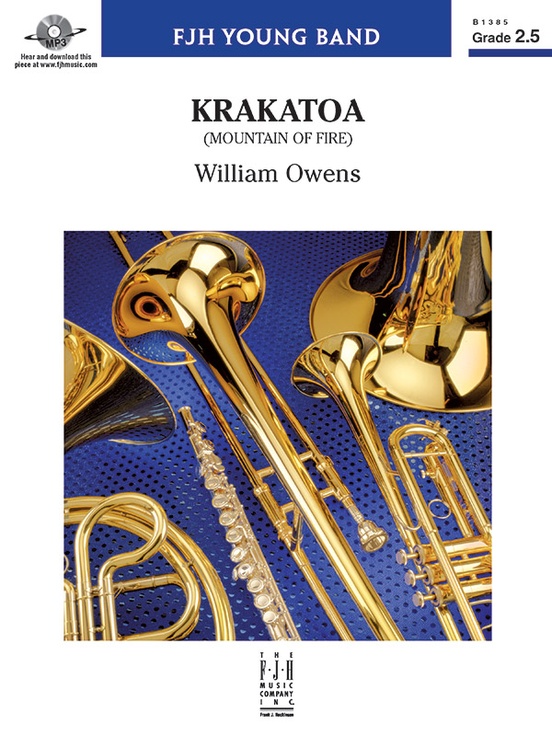Results
-
 £49.50
£49.50Yankee Doodle (Concert Band - Score and Parts)
A lovely little march by James Swearingen that is made to order for elementary level bands. Starting out with just the woodwinds and snare drum, this tuneful arrangement is a gem. As usual, Swearingen's melodic and rhythmic touches make this a piece you'll play over and over for years to come. Full Score.
Estimated dispatch 7-14 working days
-
 £48.95
£48.95Arocknophobia - Steve Hodges
Your students will have no fear of playing this piece-in fact, they'll probably ask you to play it over and over again! This rock-inspired piece has a contagious melody and driving backbeat that will keep your band and the audience entertained.
Estimated dispatch 3-5 working days
-
 £46.95
£46.95Rite of Ascension - Vince Gassi
Honor, greatness and celebration are images conjured by this new work for band. An energetic opening sets the mood for a solemn and mysterious theme. Melody and countermelody weave an interesting tapestry while the energy continues to build throughout. The result is a piece that your students will want to play over and over.
Estimated dispatch 3-5 working days
-
 £66.95
£66.95Barcarolle (from ) - Jacques Offenbach / arr. Jack Bullock
, one of the most famous operetta melodies, is presented here for concert band. Its "rolling" melody and simple harmonic structure have made it a favorite the world over. Written by one of the originators of the operetta musical form, Jacques Offenbach, it has endured for over 150 years. A historic work in a contemporary setting . . . a most musical gem!
Estimated dispatch 3-5 working days
-
 £53.95
£53.95Krakatoa - William Owens
This stunning and powerful work recalls the massive Krakatoa explosions of 1883 that were heard over 2,000 miles away. The piece begins with an immediate intensity using dissonant ascending notes representing burning lava, while low voices and percussion signify the thunderous blasts. A haunting slow section follows, exuding fear and uneasy anticipation. The music then becomes frantic and highly rhythmic as it leads to the huge eruption, depicted by well-written aleatoric passages that occur over booming bass lines. The "aftermath" is strangely quiet, but soon the angry mountain speaks once more in a powerful and thrilling ending!
Estimated dispatch 3-5 working days
-
£69.96
Scaff! - Score and Parts - Hector Berlioz
Scaff! is an adaptation of the famous 4th movement of the Symphonie Fantastique by Berlioz in swing style. The story of the March to the Scaffold is a tragic one where the subject, in a depressive state over a love interest, overdoses on opium. He dreams that he has killed his beloved and after his procession to the scaffold is now witnessing his own death. This arrangement doesn't really reflect those tragic circumstances but instead redresses this great tune into a toe-tapping big band number.
Estimated dispatch 7-14 working days
-
£13.95
Scaff! - Score only - Hector Berlioz
Scaff! is an adaptation of the famous 4th movement of the Symphonie Fantastique by Berlioz in swing style. The story of the March to the Scaffold is a tragic one where the subject, in a depressive state over a love interest, overdoses on opium. He dreams that he has killed his beloved and after his procession to the scaffold is now witnessing his own death. This arrangement doesn't really reflect those tragic circumstances but instead redresses this great tune into a toe-tapping big band number.
Estimated dispatch 7-14 working days
-
£29.95
Southdown - Score and Parts - Ray Steadman-Allen
Program NotesRay Steadman-Allen is one of the most foremost composers of the Salvation Army. He has over 400 pieces published and has been a most inventive and creative composer since his first composition was published in 1945. Having officer parents meant Ray grew up in the Salvation Army. He himself became an officer in 1950 and subsequently held many positions within the SA culminating in 1967 when he was appointed as the Head of Music Editorial where he was responsible for selecting and editing all music to be published by the SA. His versatility means he can compose music for all occasions and for all instrumental combinations; from Championship section test pieces to a straight forward setting of a children's song.The march Southdown represents music of a simpler nature from this great composer and was composed originally for a music school in Bolney Court. Bolney Court, near Brighton, is close to the downs in the southern county of Sussex, hence the title. It follows the traditional form of a march and will be an attractive addition to the repertoire of most types of wind-band.
Estimated dispatch 7-14 working days
-
£5.95
Southdown - Score only - Ray Steadman-Allen
Program NotesRay Steadman-Allen is one of the most foremost composers of the Salvation Army. He has over 400 pieces published and has been a most inventive and creative composer since his first composition was published in 1945. Having officer parents meant Ray grew up in the Salvation Army. He himself became an officer in 1950 and subsequently held many positions within the SA culminating in 1967 when he was appointed as the Head of Music Editorial where he was responsible for selecting and editing all music to be published by the SA. His versatility means he can compose music for all occasions and for all instrumental combinations; from Championship section test pieces to a straight forward setting of a children's song.The march Southdown represents music of a simpler nature from this great composer and was composed originally for a music school in Bolney Court. Bolney Court, near Brighton, is close to the downs in the southern county of Sussex, hence the title. It follows the traditional form of a march and will be an attractive addition to the repertoire of most types of wind-band.
Estimated dispatch 7-14 working days
-
£64.95
Stai si, defenda! (Stand Up and Defend) - Score and Parts
Stai si, defenda romontsch, tiu vegl lungatg (Stand up, defend your old Romansh language): This composition was named after a quotation from a poem by famous Romansh poet Giachen Casper Muoth. The arrangement deals with various well known songs for male choir such as A Trun sut igl ischi (In Trun under the malpe tree), Si sededesta Rezia (Wake up, land of Raetia), Il pur suveran (The independent farmer) or Il paun palus (The rosted bread). An atmospheric beginning over a pedal point uses quotations from these songs and leads eventually into a dark but warmly orchestrated section on Nossa viarva (Our language) by H. Erni. The piece ends, once more quoting A Trun sut igl ischi by J. Heim, a dedication to struggle for freedom and independence.
Estimated dispatch 7-14 working days
